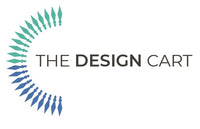Color and Its Psychology
Color is a powerful communication tool. It is non-static and its meaning can change from one time to other, depending upon what energy it is generating at that point of time. The meaning of a color depends upon cultures and various other circumstances. Artists believe that colors can dramatically alter mood and feelings towards a particular thing. The artist Pablo Picasso once said that colors follow the changes of the emotions. Colors are used to signal actions, influence moods and also psychological reactions. Different colors are combined together to create several new colors.
Designers use colors as a tool to express something. Perception of people for various colors is often subjective; however, there are certain colors that have a universal impact on everyone. Colors that are around the red area of the color spectrum are called warm colors like red, yellow and orange. Whereas, colors on the blue side of the spectrum are called cool colors like blue, green and purple. Warm colors evoke emotions that range from feeling of warmth and comfort to the feeling of anger.
Cool colors are calm, but can also cause sadness and indifference. People respond to different colors differently. Chromo therapy is referred to as a light therapy, wherein colors were used to heal. Red stimulates the body and increase circulation and yellow stimulates the nerves and purifies the body. However, mood altering effects of colors may be temporary. A blue room may be calming in the beginning, but its effect soon vanishes. Color preferences might also change with age. A white colored product might be liked by people when they grow old, rather than when they are young.
WHAT IS COLOR PSYCHOLOGY?
Psychology of any color depends on the impact of that color in different facets of people’s life. There were many experiments made, justifying color psychology in its own personal terms. Several colors are combined together to produce different colors. Whereas, certain colors like green and magenta when combined, cancel out each other and produce white light. The concept of color psychology has been a topic of great interest in marketing, design, art and other areas. Your preference of color is deeply rooted to your experience or culture. The concept of color psychology can also be applied in everyday life. Your house can be re-painted with a new color scheme or new color combinations in dresses can also be picked up.
PSYCHOLOGY OF COOL COLORS
If you want to be creative, go for cool colors. The color purple is a combination of both red and blue and provides a nice balance between stimulation and serenity and encourages creativity. Light purple creates peaceful surroundings and relieves tension. For calming environment, go for green and blue colors. These colors are considered restful. These colors have a scientific logic and are less strained on your eye. The color blue is suggested for high traffic rooms or for rooms where you are supposed to spend good quality time. Blue is a calming and serene color and is said to lower blood pressure. The color green is natural and cool and it is said to stimulate growth and brings goodwill in terms of money and health. These are harmonious colors and results in focused and pure surrounding.
PSYCHOLOGY OF WARM COLORS
To create a stimulating environment, go for warm colors like red, yellow and orange. These colors whet people’s appetite as they are often associated with food. Bright tones of orange and yellow reflect more light and excessively stimulate a person’s eye, causing irritation. However, these are highly energetic colors that create a stream of excitement and enthusiasm. They are related to change and can also be compared with sophistication. These colors attract the attention and are also used to comfort and initiate romance and love.
There are several other colors that depict various moods.

The Color White
- purity
- innocence
- cleanliness
- sense of space
- neutrality
- mourning (in some cultures/societies)
The Color Black
- authority
- power
- strength
- evil
- intelligence
- thinning / slimming
- death or mourning
The Color Gray
- neutral
- timeless
- practical
The Color Brown
- reliability
- stability
- friendship
- sadness
- warmth
- comfort
- security
- natural
- organic
- mourning (in some cultures/societies)
The Color Pink
- romance
- love
- gentle
- calming
- agitation
There are online stores like The Design Cart that let you shop by color, easing out your pain. Hope this was helpful, Happy shopping!











